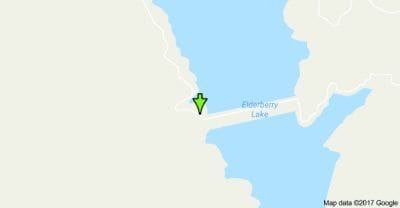Fresh-water mussels that can cause millions of dollars in waterway and pipeline damage invaded Lake Piru two years ago, and invaded Pyramid Lake before Christmas.
Now, the tenacious hard-to-kill mollusks are knocking at the door of Castaic Lake.
Since mid-December, at least six adult quagga mussels were found in the Angeles Tunnel, a connector between Pyramid Lake and Elderberry Forebay, two components of the State Water Project north of Los Angeles.

Elderberry Forebay is a small reservoir which was partitioned from Castaic Lake in 1974 to store water for pumped-storage hydroelectricity generation.
Being in the Elderberry Forebay on the western arm of Castaic Lake, however, is too close for comfort for local water officials.
Last week, members of the Castaic Lake Water Agency were briefed about an ongoing multi-agency effort by Southern California water interests to protect against quagga mussel infestation.
“Right now at Castaic Lake, they’ve not found anything so far,” Brian Folsom, the agency’s engineering and operations manager, told the board Wednesday.
“But, right now is the dormant period,” he said. “The spring and summer are the reproductive months, so the next couple of months will tell us a lot.”
Folsom attended a “Quagga Mussels Workshop” on Jan. 25 that included officials from most of Southern California’s water interests including Los Angeles Water & Power which operates a power plant near the Elderberry Forebay and Metropolitan Water District of Southern California.
“At Castaic Lake, they (quagga mussels) are right at the door,” Mauricio E. Guardado, general manager of the United Water Conservation District which hosted the workshop told The Signal Tuesday.

“The idea of the workshop was ‘Let’s all get together and figure it out.’ Once a lake is infested, it (infestation) spreads quickly. They populate very fast,” he said.
Six months ago, before the mussels were found in Pyramid Lake, Guardado and his team opened a water discharge pipe at Lake Piru to inspect it.
“The pipeline was two inches thick with quagga mussels,” he said.
Quagga and zebra mussels are small, non-native freshwater mollusks that attach onto hard substrates and can cause damage to water delivery systems.
On Monday, officials with the California Department of Water Resources issued a press release warning that quagga mussels – at least the microscopic larval version of the mollusk – had been found in the Santa Ana Pipeline.
The mussel larvae were detected in water samples collected at the North Park valve of the Santa Ana Pipeline, which transports water from Silverwood Lake, San Bernardino County, to Lake Perris, Riverside
County.
661-287-5527
on Twitter @jamesarthurholt

Quagga Mussels found in Lake Piru in December 2013. 011714








